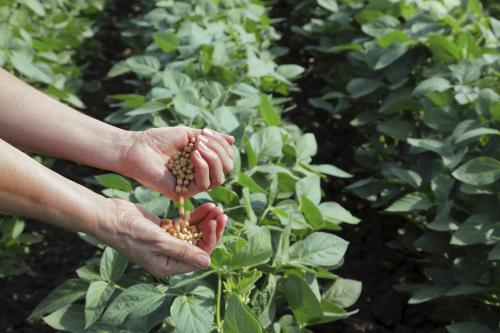

Soy planting methods
Soy beans are native to Southeast Asia, but 45 percent of the world’s planted land area and 55% of the world’s harvest are in the US. The US produced 75 million tons of soy beans in 2000, over one-third of which were exported. Other large scale producers include Brazil, Argentina, China and India. Most of the soy beans harvested in the US are either used as cattle feed or exported, despite rising consumer interest.
Soy beans can be planted year round; however each growing period has unique factors relating to blossoming, disease, yield, bean composition and cost.
Growing times and factors
Spring Summer: Sowing takes place between 15 February and 20 March. The area planted is concentrated in the Mekong Delta provinces in the South (An Giang, Dong Thap), and Ha Bac, Lang Son and Cao Bang provinces In the North. It is important to note that this harvest period represents a higher than normal disease and infestation risk in the South.
Summer Fall: The best time for sowing is from 05 April to 20 April. The disadvantage of this period is a high reliance on the first rains of the season; if the rains do not come as expected this can lead to a drought period which starves the seedling. Long days with ample sunlight will lead to a lengthening of the blossoming period during which the leaves of the plants will take up a large amont of space. Because of this it is important to ensure the plants are spaced relatively sparsely.
Fall Winter: Sowing takes place from 15 July to 05 August. Beans grown during this period suffer relatively little worm and insect infestation, and the harvest period is convenient for drying and preparation for storage.
Winter: Concentrated in the Northern provinces, sowing during this period takes place between 20 September and 05 October.
Winter Spring: The sowing period usually ranges from the end of November till the start of January and is concentrated in the Mekong Delta provinces. This period results in the highest relative yield. The best type of soil is light and soft, well broken, porous, with low acidity. Soil lacking in vital nutrients or heavy in alum can in some cases also be used, but with good irrigation and the use of fertilizer and lime.

